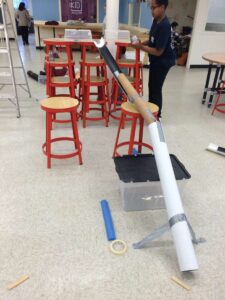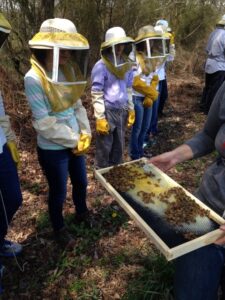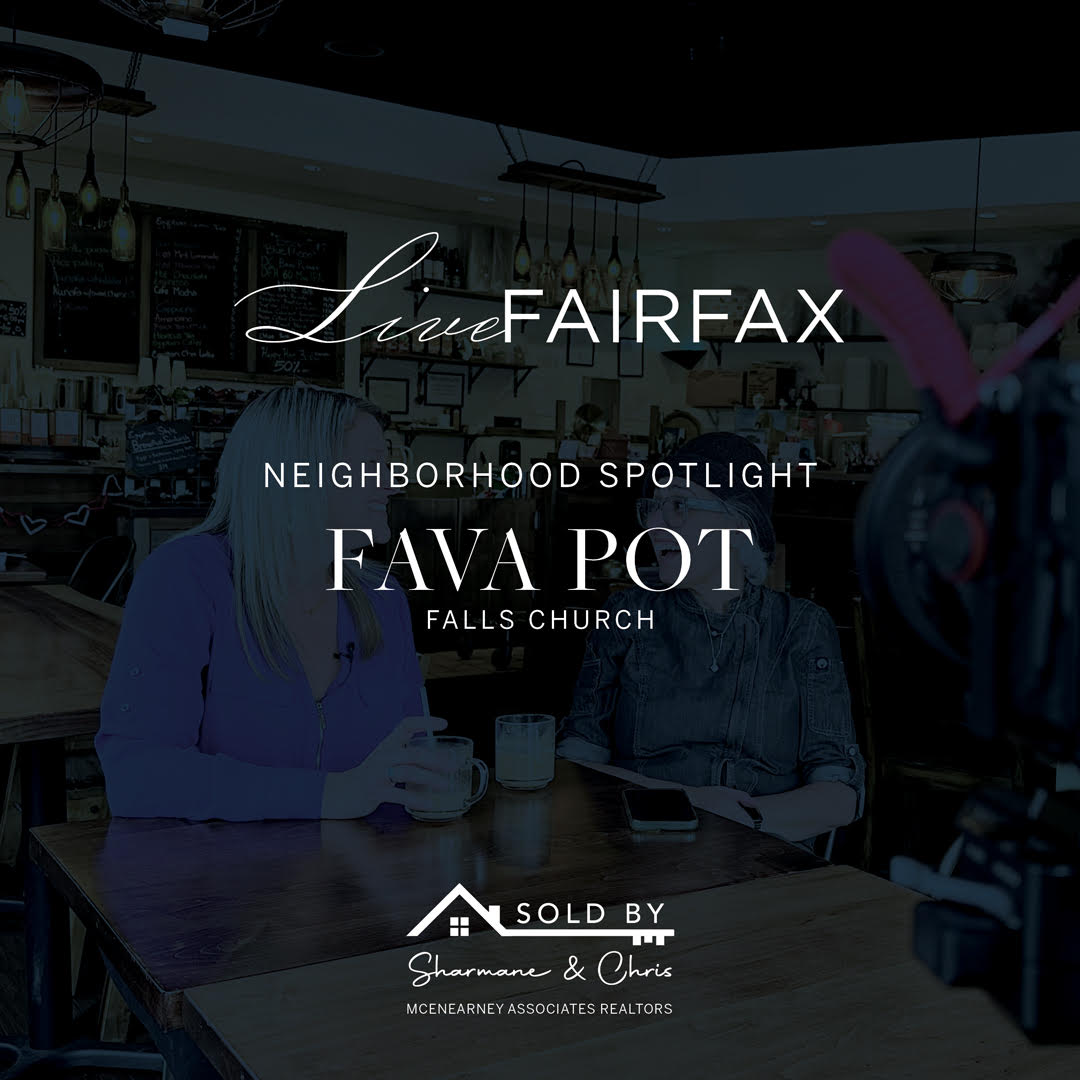Reston celebrates its 60th anniversary this year and remains a model of a true planned community — one that stresses quality of life and the ability for residents to live, work and play in their own community.
Founder Robert E. Simon had that goal of quality of life and common shared scenic beauty, and those guiding principles remain, even as Reston has changed over the years.
Today, Reston Association and its Board of Directors are the ones tasked with ensuring we have a community that is sustainable, inclusive, and resilient. It is those qualities that make Reston a great place for people to call home. Those qualities are fundamental to maintaining excellent property values and our prized community amenities. So it’s important that all of us within Reston Association take time to cast votes this month in our annual Board of Directors election.
A total of four seats are open in this year’s election, and the candidates for each seat have shared priorities and goals. These individuals are the ones tasked with guiding the policies and procedures for the Association, approving the annual budget and assessment, and helping to ensure Reston remains a unique and welcoming community.
If you value being a part of the Reston community and want to ensure its place in the future, I urge you to take a moment to learn about the candidates and cast your vote in the Board of Directors election. Ballots were mailed to all households within the Association and must be either mailed back or submitted online no later than 5 p.m. on Monday, April 1, 2024. The results of the election will be announced at the 2024 Annual Members’ Meeting on Tuesday, April 9. All RA members are invited to attend the reception and meeting; registration is required.
By Ed Abbott, Chair, Reston Association Elections Committee
The preceding sponsored post was also published on FFXnow.com
What do I do if school doesn’t fit my kid?
That’s the question that so many of the parents and families ask when they’re looking at small independent schools like The Howard Gardner School. There are any number of reasons that their current school might not fit.
- “My son is surviving, but they definitely aren’t thriving”
- “My daughter stopped doing gymnastics, and doesn’t ride horses anymore. She just does schoolwork.”
- “I don’t think the school ever really ‘got’ my kid… they’re just different”
These are quotes pulled from parents looking at HGS this year. Our families are a diverse group from all different backgrounds. Our students are just as varied with all kinds of reasons for being at The Howard Gardner School. The common thread is that school wasn’t working.
When school — as we think of it now — was invented, in the 1800s, it was in answer to the industrial revolution. Desks in rows and columns, classrooms with the same number of students as factories had workers in each shift. Even a curriculum contained by four walls and a textbook, set to a standardized approach for a standardized set of goals.
A few things have changed in the last two hundred years
Public school in the United States was and is a ground-breaking, crucial program with an audacious mandate: Educate every single citizen of the most diverse nation in the history of the world. Public educators are dedicated professionals seeking to do just that — but the mandate is virtually impossible. What works for one student might be antithetical to the needs of another. What makes one kid excited might make another kid anxious. As a result, typical schools seek to do the most that they can for as many students as they can. It’s a laudable and practical approach to a truly difficult circumstance.
But what if your kid doesn’t fit?
The parents, families, and kids who are exploring The Howard Gardner School are obviously considering a new school setting. It’s a wonderful truth that this region has an incredible array of top tier public and private schools. In particular, this area’s set of intentionally small schools is truly impressive. The Washington Small Schools Association and the Virginia Small Schools Association can provide interested families with information and ideas about how to find a school that fits.
In fact, the admissions staff at these small schools will take the time and effort to help each individual student find and access the best possible fit for them. Because each small school can be a different place — with programs, teachers, even campuses that fit different kinds of kids.
At The Howard Gardner School, we work with a very small number of students, in very small classes, designed around experiential programming. For instance, we take thirty-six field trips per year. Our students have multiple overnight travel opportunities each school year. And because of the needs of the teenage brain, we start the school day at 10 a.m. If sitting at a desk for eight hours a day, or slogging through another two hours of homework at night isn’t the right fit for your kid, HGS could help you find a better one. 
Our mission here at The Howard Gardner School is to help bright, creative, non-traditional students use their unique strengths to thrive academically, intellectually, and emotionally.
Please check out our website at www.TheHowardGardnerSchool.org, and call or email to learn more about how to find the best fit for your kid.
There is a place where each young person can find their fit and thrive. The process is a bit like being in a dark room — the hard part isn’t turning on the light, it’s finding the switch.
The Howard Gardner School
Serving bright, creative, non-traditional learners in grades 6-12
Alexandria, VA & Sterling, VA
703-822-9300
The preceding sponsored post was also published on FFXnow.com

Laura Schwartz is a licensed Realtor in VA and D.C. with McEnearney Associates in Vienna. You can follow Laura on Instagram at @LauraSchwartzRealtor or her Facebook page. Laura can be reached at 703-283-6120 or [email protected].
Last week you may have read some headlines about how the “6% real estate commission” as we know it is dead. There was a class action lawsuit that the National Association of Realtors ® agreed to settle last week for $418M. Here’s what you need to know about how that impacts you:
What the lawsuit was about
There was an argument that real estate commissions were fixed and it wasn’t clear that the seller was also paying the buyer’s commission. Worth noting: the original lawsuit was filed in Missouri where real estate practice may differ from the way we do things in the D.C. Metro area. We have ALWAYS had forms that the seller signs and that the buyer is required to sign to create representation agreements that clearly spelled out how, and how much, agents were getting paid. And buyers and sellers have always had options of how much service they want and what they were willing to pay for it — always.
What this means moving forward
Part of the lawsuit settlement, if approved, includes the following changes to how real estate is done — the MLS will no longer have a buyer agent commission (also known as selling agent) listed as part of the advertisement. In fact, the MLS will be prohibited from publicly offering one starting mid July of 2024.
There are lots of details to be worked out, including a court approving this settlement, but here’s what you really need to know about buying and selling real estate in the coming months:
- Until July, you might see subtle changes but the big changes won’t take effect until then.
- Sellers CAN still choose to offer compensation to the buyer’s agent, but how that’s advertised will be different — still TBD.
- Buyers who want their own representation will now have to pay for their own agent. You will have to discuss this with your real estate agent and have a signed agreement prior to seeing any houses.
- Buyers can ask for closing cost credit from the sellers as part of their offer to cover the commission of their agent, if they don’t want to or can’t come out of pocket to pay the agent directly as part of their closing costs. Sellers can agree or disagree.
There are parts that bother me that I think got severely overlooked:
- Buyers who plan to use a VA Loan (used by our Veterans and/or active duty military) are NOT allowed to pay any fees related to a real estate agent as part of their loan. They don’t even have the option. So unless the VA figures out how to handle this new policy, there’s a lot of uncertainty related to using a VA loan and representation.
- First time buyers and FHA buyers — usually believed to be smaller down payments (FHA is a 3.5% minimum and a conventional loan can be as little as 3%), will now also have to come up with more money to pay at closing to hire an agent unless they can get a seller credit to off-set the cost.
I believe the intent of this was to make the process clearer — and that’s a good thing — but the experts think this will bring down home prices because prices were inflated to account for commission. However, I think they’re actually making the entry into owning homes harder. Buyers don’t know what they don’t know and not having an experienced professional to guide them through the process and protect their interests will end up hurting them in this major life purchase.
More to come on this as things get cleaned up and new policies get put in place, but change is coming.

The preceding sponsored post was also published on FFXnow.com
Earn top dollar with full benefits!
When you join the Electrical Alliance, you get to contribute to the biggest projects in the area, all while earning top dollar and employer paid benefits.
As an Electrical Alliance worker, you get:
- Salary Range $11.50 — $54.00/Hour
- Paid Apprenticeship
- Continuing education to advance within the industry
- Safer working conditions and top-tier safety training
- Full Family medical care, eye care, dental care, and EAP programs
- Paid time off
- Employer Paid Retirement Benefits: Pensions and Annuity
The preceding sponsored post was also published on FFXnow.com
This biweekly column is sponsored by The Mather in Tysons, Virginia, a forward-thinking Life Plan Community for those 62 and better.
Generation X — whose members are currently 43 to 58 years old — has been continually overshadowed by the much larger baby boomer and millennial generations. Yet these days, this “forgotten generation” has moved to the forefront. They are parents; employees and bosses; social, cultural, and political leaders… but who are they?
New research offers a detailed look at Gen X’s key lifestyle trends, attitudes, and interests. The Gen Xperience Study is a five-year research study of Mather Institute, an award-winning resource for research on wellness, aging, and successful aging service innovations. The Institute is the research area of Mather, a not-for-profit organization with other areas of service, community-based initiatives, and luxury senior living communities including The Mather, a Life Plan Community for those 62 and better in Tysons, Virginia.
“The topic of Generation X is important to us for several reasons,” says Raj Radke, Vice President and General Manager of The Mather. “Many of our team members are Gen X; the adult children of many current residents belong to this generation, as do a sizeable percentage of The Mather residents!”
For its Year 1 report, Mather Institute surveyed a nationally representative sample of 2,504 members of Generation X (born between 1965 and 1980). In order to draw comparisons and paint a picture of where Gen Xers might be heading in the future, they also surveyed 2,515 members of the baby boomer generation (born between 1946 and 1964).
“We found that Gen Xers have three clear priorities: family, career, health and wellness,” says Jennifer Smith, PhD, AVP and director of Mather Institute. “Interestingly, we also found that although they are generally satisfied, many of them are also experiencing considerable stress in these same areas.”
For example, it’s no surprise that 81% of Gen Xers are stressed about finances at least sometimes. And — although this generation prioritizes their physical and mental health — nearly one-third of them reported that their wellness is a source of concern: 35% are stressed about their physical health, and 34% are stressed about their mental health. While 96% said that self-care is important to them, two out of five also admitted they don’t get as much self-care as needed.
“We were curious about how these stresses, perspectives, and experiences among Generation X compared to those of baby boomers,” says Jennifer. “We were intrigued to learn that Gen Xers — despite being younger — have more concerns about aging than their boomer counterparts.” The study shows that members of Gen X are specifically worried about their future finances, memory problems, and social isolation. However, when baby boomers think about growing older, they are more concerned about losing their independence.
In short, members of Generation X are doing their best to Age Well. For the most part, they are satisfied with their lives, though many are also coping with stress. The next few years of Mather Institute’s research may reveal changes in both the levels of satisfaction and in stressors.
“The Gen Xperience Study gives us deeper insights into an important generation,” says Radke. “We at The Mather are delighted to have this opportunity to better understand Generation X. We’re looking at ways to apply what we’ve learned from the report to support team members and residents alike.”
The Year 1 findings of the study are available in a free downloadable report, The Gen Xperience: A 5-Year Journey into the Lives of Generation X. You can find it at GenXperienceStudy.com.
The Mather in Tysons, VA, for those 62 and better, is a forward-thinking Life Plan Community that defies expectations of what senior living is supposed to be. It opened in March 2024.
The preceding sponsored post was also published on FFXnow.com

Laura Schwartz is a licensed Realtor in VA and D.C. with McEnearney Associates in Vienna. You can follow Laura on Instagram at @LauraSchwartzRealtor or her Facebook page. Laura can be reached at 703-283-6120 or [email protected].
Decided to stay in the area for spring break and didn’t sign you kids up for any camps? Don’t worry as I have you covered for some exciting events taking place in the area.
Saturday, March 23 at 7:30 p.m. and Sunday, March 31 at 1 p.m. –– Washington Spirit
Fresh off the USWNT Gold Cup Championship, head to D.C. to watch the Spirit, including Trinity Rodman, either in a night game or Sunday matinee. If you are headed there for either game, there are great dinner and brunch options in the area, including Osteria Morini.
Tuesday, March 26 — Nationals Futures Game at 12:05 p.m.
The Washington Nationals are putting their best prospects in D.C. for a special showcase game and will include some current major leaguers. Pro tip: Check Seat Geek and Stubhub for possibly better ticket prices.
The National Air and Space Museum in D.C. has 8 new galleries open as they continue their years-long renovation. Reserve your free timed entry pass.
Jurassic Park fans can head to EagleBank Arena in Fairfax to check out the live tour of Jurassic World in an “action packed, live arena show.” Each ticket includes a pre-show experience of photos with some of everyone’s favorite dinos and vehicles. There are shows starting Saturday, March 23 and run throughout the week including noon showings on Wednesday, Thursday and Friday.
Of course there are our families two favorite local places: Topgolf (Loudoun and National Harbor) and Dave and Buster’s. Don’t forget Topgolf on Tuesdays is half price and games at Dave and Buster’s on Wednesdays cost half the tickets. If you go to Topgolf in Loudoun take the kids for crazy shakes after just across the street in One Loudoun to The Yard.
The preceding sponsored post was also published on FFXnow.com
On January 6, 2023, a three-judge bench of Pennsylvania’s Superior Court made a ground-breaking decision regarding paternity testing for children whose fathers doubted their paternity.
While the Superior Court’s decision on V.L.-P. v. S.R.D. may not be final, this case becomes a classic example of when the child’s best interests were weighed against science.
Paternity Testing Has Come A Long Way
Paternity testing has come a long way. Not more than four decades ago, paternity testing involved bringing a child whose paternity was in question into the courtroom, where the judge or the jury would decide if the baby had any semblance with the accused father.
Given the advanced methods of determining paternity today, it is difficult to imagine how anyone would have thought such an approach was a good idea.
“The closest to genetic testing was blood tests approved in 1961 but its accuracy was nowhere close to genetic tests,” says Matt Towson of Towson Law Firm.
Paternity by Estoppel
Even with the tests, a man who acted like a father to a child was estopped (disallowed) from denying paternity later.
When deciding a 1963 Com. ex rel Weston v. Weston case, a three-judge bench of the Pennsylvania Superior Court observed that it was not right for a person to accept the role of a parent to a child only to question it later. At the same time, the court observed that the blood test, the only available test at the time, was not definitive.
The Story behind V.L.-P. v. S.R.D
V.L.-P. v. S.R.D. 2023 Pa. Super. 2 (2023) revolves around the paternity of A.D., a 14-year-old girl born in 2008. According to the child’s mother, the child was a product of sexual intercourse she had with S.R.D. on the 2008 Super Bowl Sunday.
When the mother informed the father about the pregnancy, the father, S.R.D, accepted it as the truth and took full responsibility by being in A.D.’s life, including paying child support.
S.R.D. went as far as sharing physical custody of A.D. during the pandemic, but around this time, he stopped paying child support and demanded genetic testing. As a result, the mother, through her lawyer, asserted estoppel on the premise of S.R.D.’s relationship with A.D. for over 12 years.
When It All Began
The controversy about the child’s paternity began in early 2020 when S.R.D. and his current wife set out to explore their genealogy on Ancestry.com in early 2020. The results from Ancestry.com showed that S.R.D did not have any genetic connection with A.D.
When making the decision, the superior court noted that paternity was a fact that needed to be known. According to Judge Megan King, failure to do so could mean perpetuating fraud.
There is a possibility that S.R.D. is the child’s father, assuming that there was an error in Ancestry.com’s results. But the mother’s claim that a swab test is more harmful than the truth seems hollow and only raises suspicions that she may have something to hide.
Life Turned Upside Down
The sad part of this story is that A.D.’s life has been turned upside down by the turn of events. The man she had known as a father all her life has withdrawn his paternity, suggesting that their relationship was anchored on a fraud perpetrated by her mother.
While it’s a painful decision if you look at it from A.D.’s perspective, it doesn’t make sense to think that a man who feels they had been lied to about the paternity of a child doesn’t have a right to know the truth.
We can all agree that the plunger is gross, and figuring out what to do with it after clearing a clogged toilet is another matter.
You know how it goes, you plunge your toilet and then look at the plunger afterwards and wonder “Do I just put it on the floor and hope and the germs on it die on their own? Should I rinse it in the tub or sink and hope that the germs aren’t transferred there?” Suffice it to say, regardless of what you do, the traditional plunger is a germ spreader.
But does it have to be that way?
That’s not what longtime Arlington resident and Schoon inventor Elaine Steele thinks!
inventor Elaine Steele thinks!
The idea for Schoon came to Elaine one morning in January of 2020 after plunging yet another clog in her bathroom in her old house in Arlington. A search of the internet for a plunger that has a way to clean itself yielded no results.
After an exhaustive search of the Patent and Trademark site to find an invention that solves this problem, she found that there were none. Elaine realized that a self-cleaning plunger did not exist.
Elaine approached her longtime friend, Pierre, about the idea of a self-cleaning plunger. Being a germaphobe, he was intrigued, and the two started collaborating on the idea that February. Several designs, a few prototypes, lots of testing, and a patent application later, Schoon was born!
Making Schoon a reality required more elbow grease! Researching and dealing with several manufacturers, part suppliers, and assembly vendors to get a quality product at the right price point was a long journey.
Elaine and Pierre are excited to officially announce that Schoon is now available for purchase online at www.theschoon.com.
So how does Schoon work?
After unclogging your toilet, Schoon allows you to use the included wand to spray disinfectant over the top and the underneath of the plunger cup, cleaning the plunger immediately after use. You can also use your Schoon to disinfect the toilet, sink, floor and surrounding area. Elaine says, “Pierre and I intentionally created a sleek design, so that you can leave your Schoon out and at the ready for use when you need it.”
To learn more about Schoon, visit www.theschoon.com.
Follow Schoon on Facebook and Instagram.
Schoon is a Trademark of ESPM, LLC. Patent number 11808021. Additional Patents Pending.
The preceding sponsored post was also published on FFXnow.com
Live Fairfax is a bi-weekly column exploring Fairfax County. This recurring column is sponsored and written by Sharmane Medaris of McEnearney Associates. Questions? Reach Sharmane at 813-504-4479.
Have you explored the culinary treasure that is Fava Pot?
This local gem not only serves authentic Egyptian cuisine but also embodies the passion and vibrancy of our community.
Fava Pot is definitely passion on the plate. Offering a menu filled with savory delights, showcasing owner Dina Daniel’s dedication to quality and tradition. Dina’s remarkable journey, which began as a humble food truck, has evolved into a beloved local restaurant, captivating the taste buds of locals with its authentic Egyptian cuisine.
Fava Pot offers a menu filled with savory delights, showcasing the owner’s dedication to quality and tradition. From koshari to delightful vegetarian options, each dish is a testament to culinary excellence.
Experience firsthand the fusion of tradition, quality, and community vibrancy that makes Fava Pot a true local gem. Your taste buds are in for a treat — join us in this video as we give you the look into the savoring the rich flavors and stories that Fava Pot has to offer.
Sharmane Medaris | Live Fairfax | www.soldbysharmane.com | [email protected] | @soldbysharmane | 813-504-4479 | 374 Maple Avenue Suite 202, Vienna, VA 22180
The preceding sponsored post was also published on FFXnow.com
This biweekly column is sponsored by The Mather in Tysons, Virginia, a forward-thinking Life Plan Community for those 62 and better.
When it comes to interior design, green is becoming a popular trend for creating thoughtful, inviting, and aesthetically pleasing living spaces.
Green, of course, is referring to sustainable interior design — a style that emphasizes the use of ecologically and ethically conscious furnishings and materials. It’s a widely appealing approach already making its way into places like The Mather, a Life Plan Community for those 62 and better.
With open floor plans and elegant fixtures, The Mather’s modern apartment homes — some up to 3,300 square feet — are a dream for interior designers like Kelly LaPlante. As a sustainability expert, LaPlante is designing the model apartment homes at The Mather with a heightened perspective on eco-friendly possibilities.
“There are so many more companies who are sustainably minded and are offering eco-friendly products,” LaPlante says. “It’s becoming a much more viable option for everyone.”
Basic sustainable interior design begins with placing an emphasis on longevity and flexibility, while being mindful of product life cycles; in other words, how long the product will be of use before it ends up in a landfill. This puts more responsibility on the designer to prevent materials and products from being discarded if they’re still functional.
Over time, some sustainability pursuits evolve based on the client’s or homeowner’s perspective. For example, a person with health concerns might focus on improving indoor air quality by sourcing low-toxicity carpets, finishes, and paints.
“Sustainable interior design refers to creating spaces that are deeply considerate of the planet and people,” LaPlante says. “There are many factors to it, and one’s focus will depend on their personal values.”
When seeking to lighten your environmental footprint, LaPlante suggests starting with the three Rs:
- Reduce — Reduce waste, especially the act of discarding products just because of it going out of style. Minimize the amount of materials and resources whenever possible. Limit purchasing products made with toxins or poorly made products.
- Reuse — Rather than buying replacement furniture, hold onto pieces that are meaningful to you and find ways to give them new life. Consider what you already own, so you’re not contributing to the need for production and shipping, which are hard on the environment. You can use these items as accents to your decor.
- Recycle — Use repurposed furniture. Mix in vintage or antique pieces — and/or pieces that are made from recycled materials. You can reupholster chairs or sofas, change out legs on chairs and tables, and update hardware like drawer pulls. Be responsible about how you dispose of pieces you are done with by recycling whenever possible.
“As with those moving into The Mather this spring, people moving into a new home will have the opportunity to reuse some of their existing pieces, so I’d always encourage starting there,” LaPlante says. “When you do purchase new items, be diligent about looking for pieces that are well made and will stand the test of time — so that they don’t end up in a landfill in five or ten years.”
Kelly adds another recommendation for those interested in sustainability: purchase organic bedding to set the stage for overall health and well-being. “We spend one-third of our lives sleeping, and that is when we do our deepest restoration,” she says. “So make the healthiest possible choices when it comes to your mattress and bedding; your bed should be a toxin-free zone.”
Making healthy choices in interior design — from comforters to couches — can result in a home that’s as ecologically sound as it is attractive.
The Mather in Tysons, VA, for those 62 and better, is a forward-thinking Life Plan Community that defies expectations of what senior living is supposed to be. It opens in 2024.
The preceding sponsored post was also published on FFXnow.com










